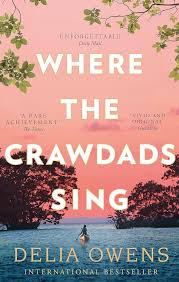45. Red Cap
byRed Cap became a significant focal point in the trial, as the questioning by Tom Milton, Kya’s defense attorney, skillfully revealed the gaps in the prosecution’s case. With his strategic questioning, Milton sought to shift the focus away from the more speculative elements of the evidence, bringing attention to the inconsistencies and doubts surrounding the supposed events leading to Chase Andrews’ death. One of the key moments in his questioning came when he asked Dr. Cone, the expert witness, whether the injuries found on Chase could have been a result of an accidental fall rather than foul play. Dr. Cone, after careful consideration, confirmed that such an incident was indeed plausible, especially if Chase had been startled by an animal or another individual, causing him to fall through the open grate. This revelation was important, as it presented the possibility that the tragic death of Chase could have been an accident rather than a crime, casting reasonable doubt over the prosecution’s theory. Milton’s continued questioning about the red cap found at Miss Clark’s residence further complicated the prosecution’s narrative. Dr. Cone acknowledged that while Kya’s hair was found in the cap, there was no direct evidence proving she wore it on the night of the murder. This moment was crucial in challenging the prosecution’s attempts to link Kya directly to the crime, emphasizing the lack of concrete evidence and opening up the possibility for other explanations for the evidence presented.
As Dr. Cone’s testimony unfolded, the atmosphere in the courtroom grew tense, and a noticeable hush settled over the proceedings. Kya, who had remained largely silent throughout the trial, found herself at the center of the courtroom’s attention, her quiet and composed demeanor leaving an impression on the jurors. The complexities of the case, marked by pieces of circumstantial evidence such as the red wool fibers, the missing necklace, and the inexplicable manner in which Chase had fallen, all seemed to intertwine in an intricate puzzle. Yet, despite the apparent connections, no clear or undeniable evidence had emerged to definitively prove Kya’s involvement. All eyes were now on her, as the jury tried to reconcile the image of Kya they had created in their minds with the tangible evidence being presented. Her silence seemed to draw them in, creating an air of mystery around her presence in the courtroom. Kya had always been an enigma to those around her, but in this moment, her quiet resolve added a layer of complexity to the case. The disjointed nature of the evidence—the cap, the fibers, and the fall—left the jury with more questions than answers, and Kya’s stillness only heightened the sense of intrigue. She stood as a figure of both vulnerability and strength, a woman trapped in a story that was still being written in front of a jury who could not yet decide her fate.
As the trial continued, Kya’s thoughts began to drift, escaping for a moment the suffocating tension of the courtroom and returning to the peaceful solace of the marsh she had spent so many years in. Her mind wandered to the countless hours spent in solitude, observing the animals and the intricate systems of survival and coexistence that flourished around her. The marsh had always been her sanctuary, a world where the natural rhythms and behaviors of creatures like gulls and fish made sense and offered clarity amidst the confusion of human society. The lessons Kya had learned from the marsh were simple but profound—survival, resilience, and understanding of the delicate balance of life. These lessons felt worlds apart from the complexity and contradictions she was now facing in the courtroom, where human interactions were layered with deceit, assumptions, and intricate legal maneuvers. The natural world, in all its raw beauty, had always provided Kya with a sense of belonging, something she could not find within the confines of the town or the judicial system. Yet, as the trial unfolded, Kya found herself drawing strength from those very lessons, finding a sense of perspective that allowed her to navigate the web of accusations and speculation that surrounded her. The peaceful memories of the marsh and its creatures grounded her in a way the trial could not, providing clarity and strength when her world seemed to be falling apart. This contrast, between the simplicity of nature and the complexity of human legal systems, served as a reminder of the life Kya had once known and the freedom that seemed so far out of reach. It also illuminated the deep emotional toll the trial had taken on her, as she was forced to confront the very forces of judgment and misunderstanding that had long shaped her existence.


